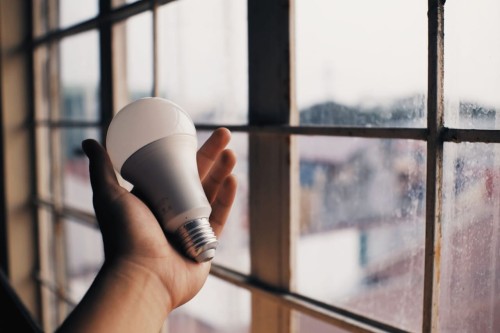
Highly Energy Efficent Homes
27 Feb 2023
- Itika Agarwal
5 Mins Read
1.Start With Smart Design
A Cost-Effective Zero-Energy Home Starts With Smart Design. Designers And Architects, As Well As Builders And Homebuyers, Need To Be Familiar With Every Step Of Energy Efficiency To Build A Net-Zero Home. Homes Should Also Be Designed In Such A Way That Builders And Subcontractors Can Implement These Steps In The Most Cost-Effective Manner Possible. There Are Some Design Parameters That Builders Need To Pay Special Attention To. Detailed Communication Between Client And Designer Ensures That None Of These Important Details Are Overlooked.
2.Use The Sun For Solar Tempering
In Winter, You Can Reduce Your Heating Costs By Letting The Sun Shine Through Your South-Facing Windows. Shading The Same Windows In The Summer Will Reduce Your Cooling Costs. Solar Tempering Aims To Optimize This Passive Use Of Solar Heat Without Incurring The Additional Thermal Mass Costs Required To Achieve Maximum Passive Solar Heating. Solar Temperature Control Should Be Considered At The Design Stage
3.Optimization by Energy Modeling
A Home's Energy Use Should Be Estimated During The Design Phase Using Energy Modeling Software To Ensure That Net Zero Energy Targets Are Met While Keeping Costs Low. Based On The Results, Design Decisions Or Modifications Can Be Made To Balance Building Performance And Construction Costs.
4.Super Seal The Building Envelope
Super-Sealing The Building Envelope Is The Single Most Cost-Effective Step A Builder Can Take To Improve The Energy Efficiency Of A Zero Energy House. Several Proven Hermetic Sealing Techniques Are Available. Choose An Approach That Fits Your Climate, Skill Set, And Budget.

5.High Thermal Insulation of Building Envelope
Making The Home Airtight Is His Second Most Cost-Effective Strategy For Creating A Zero-Energy Home. The Energy Modeling Above Helps Optimize Insulation Values for Ceilings, Walls, And Floors. Choose A Framing Strategy That Facilitates Insulation Of The Building Skin And Minimizes Thermal Bridges.
6.Use Well-Insulated Windows And Doors
Windows And Doors Are Like Big Energy Gaps In A Well-Insulated And Airtight Building Envelope, His Third Cheapest Way To Make A Home More Energy Efficient. Control Heat Loss And Heat Gain In Your Windows And Doors By Choosing The Right Window And Door Products, Carefully Placing Them, Optimizing Their Size And Orientation.
7.Creates An Energy Efficient Supply Of Fresh Air
Zero Energy Homes Are So Airtight That A Continuous Supply Of Fresh, Filtered Air And Controlled Humidity Are Critical To Their Success. There Is A Glimmer Of Hope In This Need For Ventilation.
A Zero Energy House Is Healthier And More Comfortable Than A Standard House. Energy-Efficient Ventilation Systems, Known As Heat Recovery Ventilation (Hrv) Systems Or Energy Recovery Ventilation (Erv) Systems, Exhaust Stale Air, Recover Its Heat, And Return The Same Heat Back To Your Home With Fresh Air. Increase.

8.Choose An Energy-Efficient Heating And Cooling System
Highly Efficient And Cost-Effective Heating And Cooling Systems Are Essential To Achieving Net Zero Energy Goals. A Good Choice Is A Ductless Heat Pump, Also Known As A Mini-Split Heat Pump. These Systems Are Very Energy Efficient And Do Not Have The Drawbacks Of Central Air Recirculation Systems Or The High Cost Of Thermal Heat Pumps.
9.Boil Water Smartly
After Heating And Cooling, Hot Water Is Often The Largest Energy Consumption In A Home. Therefore, It Is Important For Planners And Builders To Select And Find Efficient Hot Water Heating Technologies In Addition To Other Measures To Minimize Hot Water Consumption.
10.Install Energy Efficient Lightning
Minimizing The Energy Use Of Lighting While Optimizing Occupant Light Is A Key Feature Of A Zero Energy Home. Led Lights Are Perfect For These Tasks. They Are More Energy Efficient Than Cfl, Last For Years And Are Mercury Free. What's More, It Can Meet Your Different Lighting Needs, From Super Bright White Light To Soft Warm Light. Choosing The Right Led Lights For The Task, Strategically Placing Your Lights, And Using Natural Light As Effectively As Possible Can Significantly Reduce Your Home's Energy Consumption.
11.Choose Energy Efficient Appliances And Electronics
As Zero Energy Homes Have Highly Energy Efficient Building Envelopes And Use Highly Efficient Hvac And Hot Water Systems, New Categories Of Home Appliances And Electronics Will Become The Major Sources Of Energy Consumption In Zero Energy Homes. Become. As A Result, Choosing Highly Efficient Appliances And Electronics Is The Final Necessary Step In Minimizing Energy Use In Your Home.
12.Harness The Sun For Renewable Energy
Today, Grid-Connected Photovoltaic (Pv) Modules Provide The Most Cost-Effective Form Of Renewable Energy For Zero-Energy Homes. It Can Meet All Your Home's Energy Needs, Including Lighting, Heating And Cooling Systems, Appliances, And Hot Water. However, They Are The Most Expensive Components Of A Zero Energy Home And It Is Important To Consider Strategies To Reduce Or Mitigate These Costs.
Energy Efficient Homes Are Becoming More Important As Energy Becomes A Key Economic Issue Due To Rising Energy Demand And Unsustainable Energy Supply. This Means That Electricity Must Also Be Evaluated And Used Efficiently At Home To Heat And Light The Home. Energy Fusion Buildings Can Cut Costs While Reducing Greenhouse Gas Emissions